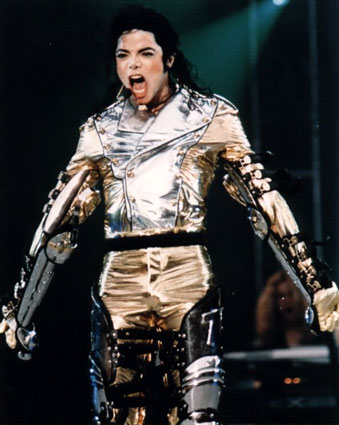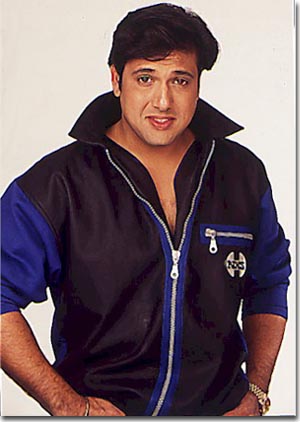Japan Air Self-Defense Force
From Wikipedia, the free encyclopedia
| Japan Air Self-Defense Force 航空自衛隊, 日本国空軍 | |
|---|---|
| Founded | July 1, 1954 |
| Country | Japan |
| Size | 45,000 personnel (2005) 805 aircraft[1] (2010) |
| Part of | Japan Self-Defense Forces |
| Commanders | |
| Current commander | General Kenichiro Sono |
| Insignia | |
| Roundel | |
| Ensign | |
| Aircraft flown | |
| Attack | F-2 |
| Electronic warfare | E-767, EC-1, E-2C |
| Fighter | F-4EJ, F-15J F-2 |
| Helicopter | UH-60J, CH-47J, KV-107 |
| Interceptor | F-15J |
| Trainer | T-7, T-400, T-4 |
| Transport | C-1, KC-767J, C-130H |
The JASDF has an estimated 45,000 personnel in 2005. As of 2010, the JASDF operates 805 aircraft, 374 of them being fighter aircraft.
Contents[hide] |
[edit] History
[edit] Formation
Before forming the Japanese Self-Defense Forces after World War II, Japan did not have a separate air force. Aviation operations were carried out by the Imperial Japanese Army Air Service and the Imperial Japanese Navy Air Service. Following World War II the Imperial Japanese Army and Navy were dissolved and replaced by the JSDF with the passing of the 1954 Self-Defense Forces Law with the JASDF as the aviation branch.[edit] Organization
Major units of the JASDF are the Air Defense Command, Air Support Command, Air Training Command, Air Development and Test Command, and Air Material Command. The Air Support Command is responsible for direct support of operational forces in rescue, transportation, control, weather monitoring and inspection. The Air Training Command is responsible for basic flying and technical training. The Air Development and Test Command, in addition to overseeing equipment research and development, is also responsible for research and development in such areas as flight medicine.The Air Defense Command has northern, central, and western regional headquarters located at Misawa, Iruma, and Kasuga, respectively and the Southwestern Composite Air Division based at Naha on Okinawa. All four regional headquarters control surface-to-air missile units of both the ASDF and the GSDF located in their respective areas.
- Prime Minister of Japan
- Minister of Defense
- JASDF Chief of Staff / Air Staff Office
- Air Defense Command: Fuchu, Tokyo
- Northern Air Defense Force: Misawa, Aomori
- 2nd Air Wing (Chitose Air Base: 201SQ, F-15J/DJ, T-4; 203SQ, F-15J/DJ, T-4)
- 3rd Air Wing (Misawa Air Base: 3SQ, F-2A/B T-4; 8SQ, F-2A/B, T-4)
- Northern Aircraft Control & Warning Wing
- 3rd Air Defence Missile Group
- 6th Air Defence Missile Group
- Central Air Defense Force: Iruma, Saitama
- 6th Air Wing (Komatsu Air Base: 303SQ, F-15J/DJ, T-4; 306SQ, F-15J/DJ, T-4)
- 7th Air Wing (Hyakuri Air Base: 302SQ, F-4EJ-Kai, T-4; 305SQ, F-15J/DJ, T-4)
- Middle Aircraft Control & Warning Wing
- 1st Air Defence Missile Group
- 4th Air Defence Missile Group
- Iwo Jima Air Base Group
- Western Air Defense Force: Kasuga, Fukuoka
- 5th Air Wing (Nyutabaru Air Base: 301SQ, F-4EJ-Kai, T-4)
- 8th Air Wing (Tsuiki Air Base: 304SQ, F-15J/DJ, T-4; 6SQ, F-2A/B, T-4)
- Western Aircraft Control & Warning Wing
- 2nd Air Defence Missile Group
- Southwestern Composite Air Division: Naha, Okinawa
- 83d Air Wing (Naha Air Base: 204SQ, F-15J/DJ, T-4)
- Southwestern Aircraft Control & Warning Group
- 5th Air Defence Missile Group
- Airborne Early Warning Group: Misawa Air Base(E-2C), Hamamatsu Air Base(E-767)
- Tactical Reconnaissance Group: Hyakuri Air Base(RF-4E, RF-4EJ)
- Tactical Fighter Training Group: Nyutabaru Air Base(F-15DJ/J, T-4)
- Air Defense Missile Training Group: Hamamatsu, Chitose
- Air Defence Command Headquarters Flight Group (Iruma Air Base: U-4, YS-11EA,YS-11EB, T-4, EC-1)
- Northern Air Defense Force: Misawa, Aomori
- Air Defense Command: Fuchu, Tokyo
- Air Support Command: Fuchu, Tokyo
- Air Rescue Wing (UH-60J, U-125A, CH-47J, KV-107)
- 1st Tactical Airlift Wing (Komaki Air Base: 401SQ, C-130H; 404SQ, KC-767J)
- 2nd Tactical Airlift Wing (Iruma Air Base: 402SQ, C-1, U-4)
- 3rd Tactical Airlift Wing (Miho Air Base: 403SQ, C-1,YS-11NT/P; 41SQ, T-400)
- Air Traffic Control Service Group
- Air Weather Service Group
- Flight Check Squadron (Iruma Air Base: U-125,YS-11FC)
- Special Airlift Group (Chitose Air Base: B747-400)
- Air Training Command: Hamamatsu, Shizuoka
- 1st Air Wing (Hamamatsu Air Base: 31SQ, T-4; 32SQ, T-4)
- 4th Air Wing (Matsushima Air Base: 21SQ, F-2B; 11SQ, T-4 Blue Impulse)
- 11th Flying Training Wing (Shizuhama Air Base: 1SQ, T-7; 2SQ, T-7)
- 12th Flying Training Wing (Hofu kita Air Base: 1SQ, T-7; 2SQ, T-7)
- 13th Flying Training Wing (Ashiya Air Base: 1SQ, T-4; 2SQ, T-4)
- Air Basic Training Wing
- Flying Training Squadron (Nyutabaru Air Base: F-15DJ/J,T-4)
- Air Training Aids Group
- Air Officer Candidate School
- 1st, 2nd, 3rd, 4th & 5th Technical School
- Air Development and Test Command: Iruma Air Base, Saitama
- Air Development and Test Wing (Gifu Air Base: F-15J/DJ, F-2A/B, C-1FTB, F-4EJ, F-4EJ-kai, T-7, T-4)
- Electronics Development and Test Group
- Aeromedical Laboratory
- Air Material Command: Jujou, Tokyo
- 1st, 2nd, 3rd & 4th Air Depot
- Air Staff College
- Air Communications and Systems Wing
- Aerosafety Service Group
- Central Air Base Group
- Others
- JASDF Chief of Staff / Air Staff Office
- Minister of Defense
[edit] Equipment
The ASDF maintains an integrated network of radar installations and air defense direction centers throughout the country known as the Basic Air Defense Ground Environment. In the late 1980s, the system was modernized and augmented with E-2C Hawkeye airborne early warning aircraft.The nation relies on fighter-interceptor aircraft and surface-to-air missiles to intercept hostile aircraft. Both of these systems were improved from the beginning of the late 1980s. Outmoded aircraft were replaced in the early 1990s with more sophisticated models, and Nike-J missiles have been replaced with the modern Patriot PAC-2 system.
The ASDF also provides air support for ground and sea operations of the GSDF and the MSDF and air defense for bases of all the forces. Although support fighter squadrons started being modernized in 1989, they lacked precision-guided weapons for support of ground operations and attacks on hostile ships, and ASDF pilots receive little flight training over oceans to prepare for maritime operations. Base defenses were upgraded in the late 1980s with new surface-to-air missiles, modern antiaircraft artillery and new fixed and mobile aircraft shelters.
They are not allowed to have strategic bombers for that would go against the self defence–only policy.
See also List of military aircraft of Japan
[edit] Aircraft inventory
The Mitsubishi F-2 support fighter. Primary fighter aircraft of the Japan Air Self Defense Force
| Aircraft | Origin | Type | Versions | In service[3] | Notes | |
|---|---|---|---|---|---|---|
| Combat aircraft | ||||||
| Mitsubishi F-2 | Fighter Fighter/Trainer | F-2A F-2B | 44 33 | Planned 94 + 4 prototype | ||
| F-4 Phantom II | Fighter Reconnaissance | F-4EJ RF-4E | 91 26 | 2 F-4EJ and RF-4s were built by US, remaining F-4EJs by built Mitsubishi under license. RF-4 version being phased out; equivalent number of F-15 to receive synthetic aperture radar pods | ||
| F-15 Eagle | Fighter Fighter/Trainer | F-15J F-15DJ | 135 45 | 2 F-15J's and 12 F-15DJ's were built by US and the rest were built by Mitsubishi under license. | ||
| Trainer aircraft | ||||||
| Fuji T-7 | Trainer | 49 | ||||
| Raytheon Hawker 400 | Trainer | T-400 | 13 | |||
| Kawasaki T-4 | Trainer | 208 | ||||
| Transport aircraft | ||||||
| Boeing 747 | VIP transport (Japanese Air Force One/Two) | 747-400 | 2 | |||
| Gulfstream IV | VIP transport | U-4 | 5 | |||
| Boeing 767 | Airborne refueling | KC-767J | 4 | |||
| Kawasaki C-1 | Tactical transport Electronic warfare | C-1A EC-1 | 25 1 | |||
| C-130 Hercules | Tactical transport | C-130H | 15 | |||
| NAMC YS-11 | Transport | YS-11 | 13 | |||
| British Aerospace BAe 125 | Search and rescue | U-125A | 32 | |||
| AEW | ||||||
| Grumman E-2 Hawkeye | Airborne Early Warning | E-2C | 13 | |||
| Boeing E-767 | Airborne Early Warning & Control | E-767 | 4 | |||
| Transport/Search and Rescue Helicopter | ||||||
| Mitsubishi H-60 | Search and rescue | UH-60J | 32 | 3 UH-60J were built by US and remaining UH-60Js built by Mitsubishi under license. | ||
| Boeing CH-47 Chinook | Transport helicopter | CH-47J | 15 | Built by Kawasaki under license. | ||











0 Comments